A draft of the EU Agriculture Commissioner’s written proposals on the shape of the next CAP reform, known in Brussels jargon as a “communication”, has been circulating ahead of its formal publication on 29 November.
While further drafts may emerge in coming weeks, it is likely that the basic shape of the CAP 2020 is contained in the current document. Overall, the proposals will disappoint farmers who were looking for major reform, though there are modifications that will make an impact.
Full-time versus part-time farmers
The idea of national governments co-financing direct payments has been rejected as it would threaten disruption to the internal market.
One noticeable progression from the current version of the CAP is the proposal that capping of direct payments in the €60,000 to €100,000 range should be considered.
This would address the widespread criticism of the current CAP payments being structured in a way that 80% of payments are made to just 20% of farmers.
It also suggests that they should “focus on those who depend on farming for a living” – an indication that full-time farmers should take priority over part-time farmers.
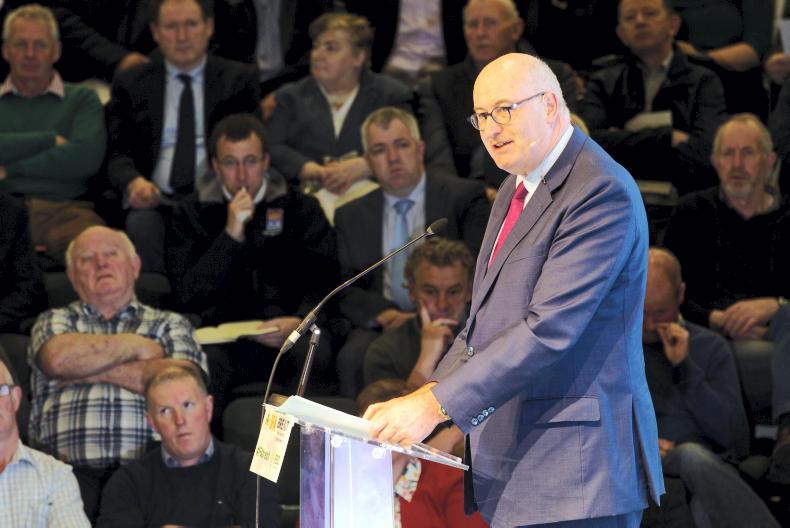
Commissioner Phil Hogan addresses farmers at the IFA Brexit event in Goffs.
Environment, community and innovation
As expected from the consultation process earlier this year, there is a strong focus on the environment and rural community and industrial development.
Innovation and smart farming are themes that feature throughout the communication and the strong reference to the use of technology suggests that there is recognition that rural broadband throughout Europe, not just Ireland, is unsatisfactory.
A further feature is the delegation of more responsibility to member states to deliver the CAP objectives within overall EU policy objectives.
This would replace the much-criticised tight EU audit controls and penalties, but of course there is no guarantee that a replacement at national level would be any more satisfactory without a change in policy.
The proposals link a smart and resilient agricultural sector, bolstering environmental care and climate action and the stimulation of employment and growth in rural areas.
The buzz words in this section are research and innovation and recognition that “there is a particular need to address small and medium sized farms access to technology.”
Reference is made to the fact that the market orientation of EU agriculture following CAP reforms over this decade has made agriculture more vulnerable to international markets and price volatility.
There are no definitive proposals on how this should be addressed beyond the setting up of a permanent EU-level platform on risk management.
This would involve all stakeholders and act as a forum for sharing experiences and have the objective of better using current tools and informing future policy development.
The idea that national taxation policy could be modified to encourage farmers make provision from good years to fund bad years is tabled as one suggestion on dealing with volatility.
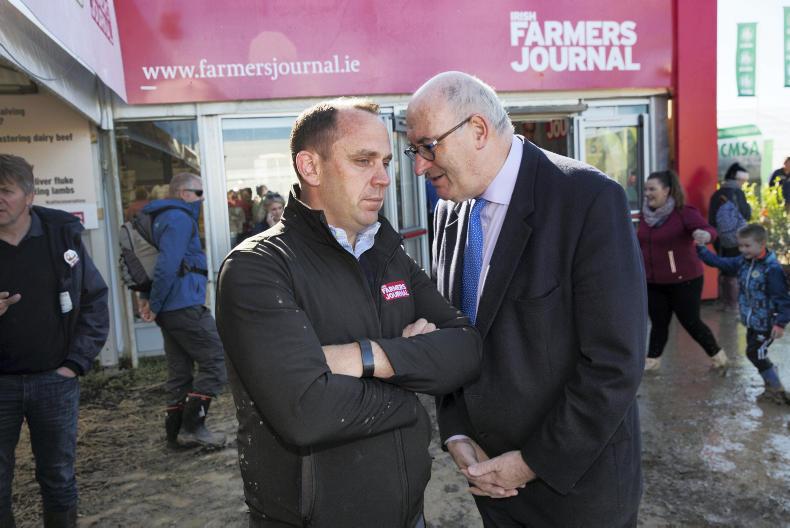
Commissioner Phil Hogan and Irish Farmers Journal editor Justin McCarthy at the Ploughing 2017. Donal O'Leary.
Environment and generational renewal
The Commissioner has long advocated for farmers being the boots on the ground to deliver environmental policy.
In his proposals, he suggests that the CAP should “allow member states devise a mixture of mandatory and voluntary measures in Pillar 1 and Pillar 2 to meet the environmental and climate objectives as part of the CAP strategic plan.”
Income support through CAP will be dependent on farmers adopting environmental and climate practices as a base line, with an opportunity to enhance revenue from CAP through what is described as “more ambitious voluntary practices.”
Getting new blood into farming has been a consistent theme of the Commissioner’s speeches over the past year. While he says it should be a priority in a new policy framework, he also says that member states are the vehicle to develop schemes that reflect the specific needs of their young farmers. Top-up payments are tabled as one suggestion to encourage new entrants.
Other points
The proposals also reference the progress that the EU has made in becoming a significant exporter of agri food.
However, it also recognised that some specific sectors of agriculture cannot withstand full trade liberalisation and a free-for-all competition with imports.
The issue of antimicrobial resistance (AMR) is also raised, and it advocates the promotion of “new technologies, research and innovation to reduce risk to public health [from the use of antibiotics]”.
These proposals indicate that CAP 2020 will be a mark II version of the current CAP rather than a radical departure.
Farmers who wanted to see a focus on productive agriculture will be disappointed, though full-time farmers look set to get priority and the issue of 20% of claimants getting 80% of the fund will also be addressed through capping.
In Ireland, the huge population of part-time farmers will be concerned by this, though there may be some comfort in the line immediately before the reference to full-time farms, which suggests “enhanced support to smaller farms.”
Expect plenty of debate on this section.
Anything that simplifies the current CAP will be welcome, though the greater involvement of member states at any level has the potential to reduce the “common” element of the policy.
Moves to encourage young farmers will be welcome, if less radical than they might have been expected.
Of course any policy in this area had to be sensitive to the wishes of existing farmers and not fall foul be being described as ageist.
Proposal to cut part-time farmer CAP payments
Each country to define active farmer term in new CAP
Mart prices: BPS money benefiting trade
A draft of the EU Agriculture Commissioner’s written proposals on the shape of the next CAP reform, known in Brussels jargon as a “communication”, has been circulating ahead of its formal publication on 29 November.
While further drafts may emerge in coming weeks, it is likely that the basic shape of the CAP 2020 is contained in the current document. Overall, the proposals will disappoint farmers who were looking for major reform, though there are modifications that will make an impact.
Full-time versus part-time farmers
The idea of national governments co-financing direct payments has been rejected as it would threaten disruption to the internal market.
One noticeable progression from the current version of the CAP is the proposal that capping of direct payments in the €60,000 to €100,000 range should be considered.
This would address the widespread criticism of the current CAP payments being structured in a way that 80% of payments are made to just 20% of farmers.
It also suggests that they should “focus on those who depend on farming for a living” – an indication that full-time farmers should take priority over part-time farmers.

Commissioner Phil Hogan addresses farmers at the IFA Brexit event in Goffs.
Environment, community and innovation
As expected from the consultation process earlier this year, there is a strong focus on the environment and rural community and industrial development.
Innovation and smart farming are themes that feature throughout the communication and the strong reference to the use of technology suggests that there is recognition that rural broadband throughout Europe, not just Ireland, is unsatisfactory.
A further feature is the delegation of more responsibility to member states to deliver the CAP objectives within overall EU policy objectives.
This would replace the much-criticised tight EU audit controls and penalties, but of course there is no guarantee that a replacement at national level would be any more satisfactory without a change in policy.
The proposals link a smart and resilient agricultural sector, bolstering environmental care and climate action and the stimulation of employment and growth in rural areas.
The buzz words in this section are research and innovation and recognition that “there is a particular need to address small and medium sized farms access to technology.”
Reference is made to the fact that the market orientation of EU agriculture following CAP reforms over this decade has made agriculture more vulnerable to international markets and price volatility.
There are no definitive proposals on how this should be addressed beyond the setting up of a permanent EU-level platform on risk management.
This would involve all stakeholders and act as a forum for sharing experiences and have the objective of better using current tools and informing future policy development.
The idea that national taxation policy could be modified to encourage farmers make provision from good years to fund bad years is tabled as one suggestion on dealing with volatility.

Commissioner Phil Hogan and Irish Farmers Journal editor Justin McCarthy at the Ploughing 2017. Donal O'Leary.
Environment and generational renewal
The Commissioner has long advocated for farmers being the boots on the ground to deliver environmental policy.
In his proposals, he suggests that the CAP should “allow member states devise a mixture of mandatory and voluntary measures in Pillar 1 and Pillar 2 to meet the environmental and climate objectives as part of the CAP strategic plan.”
Income support through CAP will be dependent on farmers adopting environmental and climate practices as a base line, with an opportunity to enhance revenue from CAP through what is described as “more ambitious voluntary practices.”
Getting new blood into farming has been a consistent theme of the Commissioner’s speeches over the past year. While he says it should be a priority in a new policy framework, he also says that member states are the vehicle to develop schemes that reflect the specific needs of their young farmers. Top-up payments are tabled as one suggestion to encourage new entrants.
Other points
The proposals also reference the progress that the EU has made in becoming a significant exporter of agri food.
However, it also recognised that some specific sectors of agriculture cannot withstand full trade liberalisation and a free-for-all competition with imports.
The issue of antimicrobial resistance (AMR) is also raised, and it advocates the promotion of “new technologies, research and innovation to reduce risk to public health [from the use of antibiotics]”.
These proposals indicate that CAP 2020 will be a mark II version of the current CAP rather than a radical departure.
Farmers who wanted to see a focus on productive agriculture will be disappointed, though full-time farmers look set to get priority and the issue of 20% of claimants getting 80% of the fund will also be addressed through capping.
In Ireland, the huge population of part-time farmers will be concerned by this, though there may be some comfort in the line immediately before the reference to full-time farms, which suggests “enhanced support to smaller farms.”
Expect plenty of debate on this section.
Anything that simplifies the current CAP will be welcome, though the greater involvement of member states at any level has the potential to reduce the “common” element of the policy.
Moves to encourage young farmers will be welcome, if less radical than they might have been expected.
Of course any policy in this area had to be sensitive to the wishes of existing farmers and not fall foul be being described as ageist.
Proposal to cut part-time farmer CAP payments
Each country to define active farmer term in new CAP
Mart prices: BPS money benefiting trade






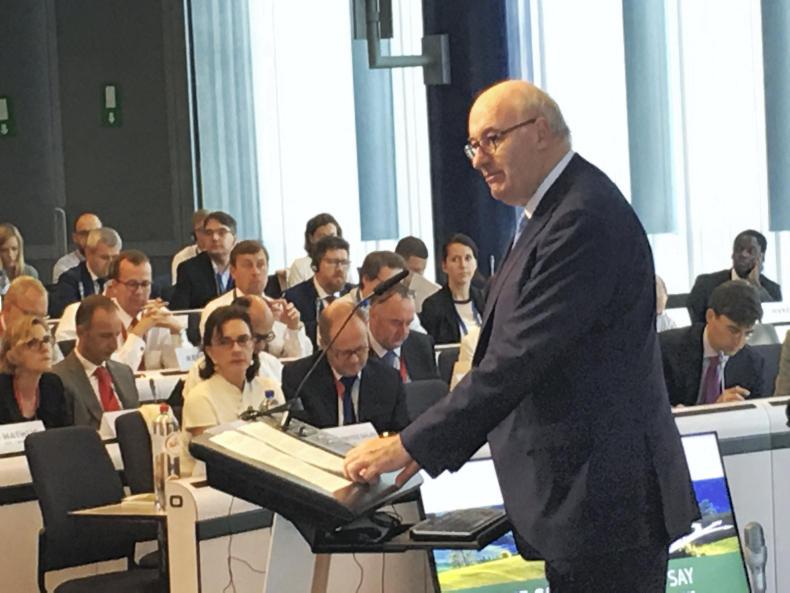
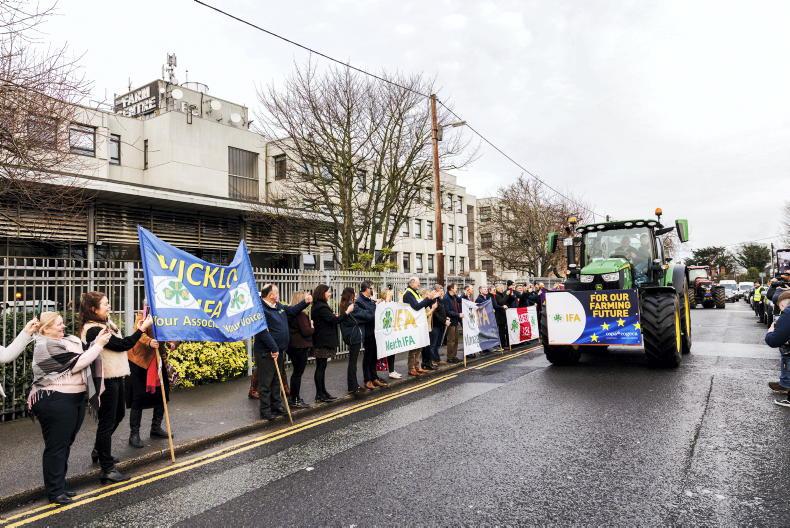
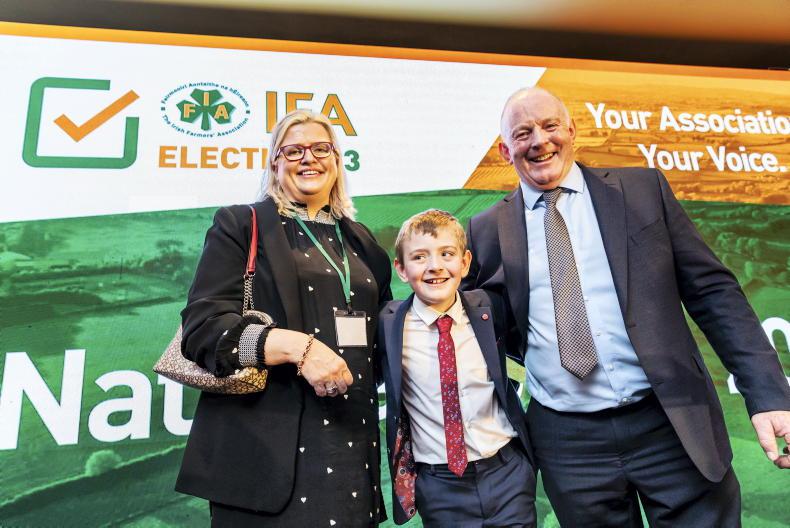


SHARING OPTIONS